Have a sunny spot where you could use a bright splash of color? Start with these 10 popular sun-loving perennials.
10 Best Full Sun Perennials that Thrive in Sunny Spots
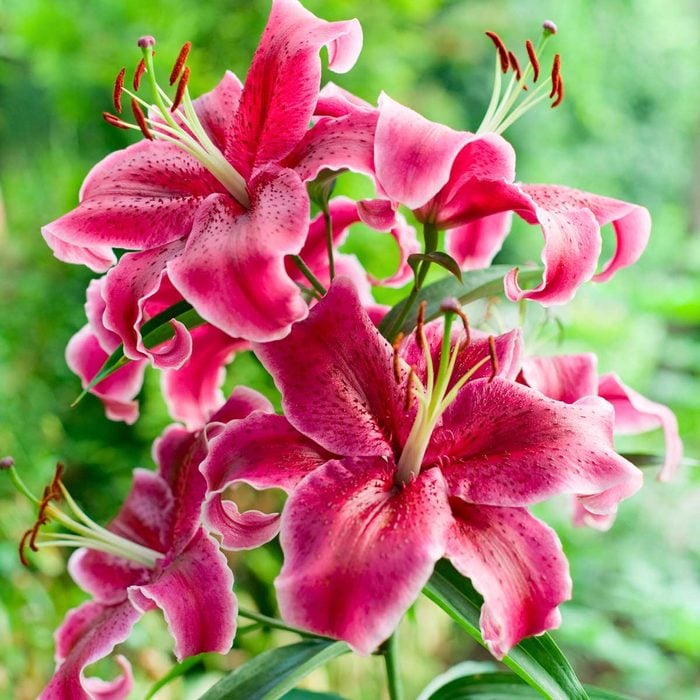
Lily
If you love using lilies in fresh bouquets, why not grow your own? These tall, narrow perennials won’t take up much space in the garden and offer armfuls of exotic-looking, highly fragrant blossoms every summer.
There are many types including Asiatic, Oriental, Orienpet, Trumpet, Martagon and species lilies. Your local garden center may have a few, but mail order bulb companies typically offer a far greater selection. Order in summer for fall or early spring planting in U.S. Department of Agriculture Plant Hardiness Zones 3 to 9.
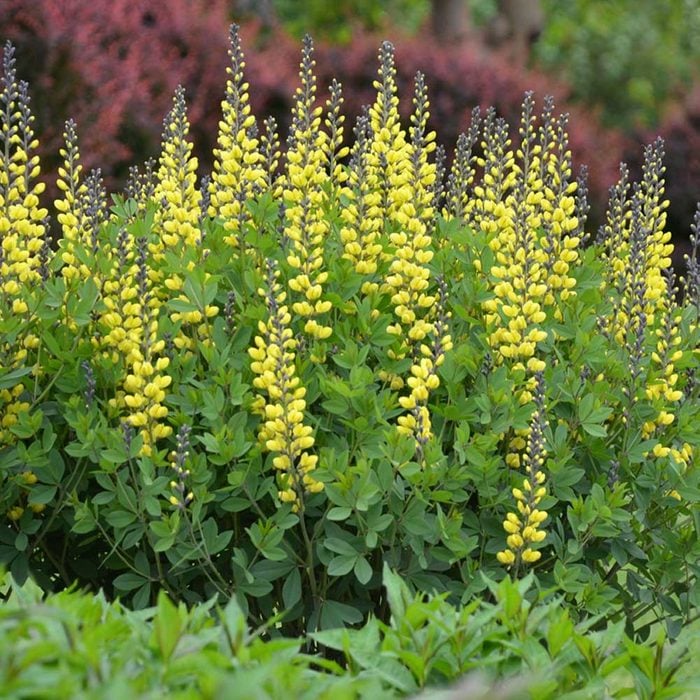
False Indigo
One of the most long-lived and durable native perennials is Baptisia, commonly known as false indigo. It tolerates wind, drought, critter browsing and general neglect with ease, and blooms every year from late spring to early summer in Zones 4 to 9. A deep tap root anchors the plant firmly in place, so choose a permanent spot.
You might be familiar with blue-flowered false indigo, but there are also more dwarf selections with yellow, pink, white, purple, maroon and bicolor flowers.
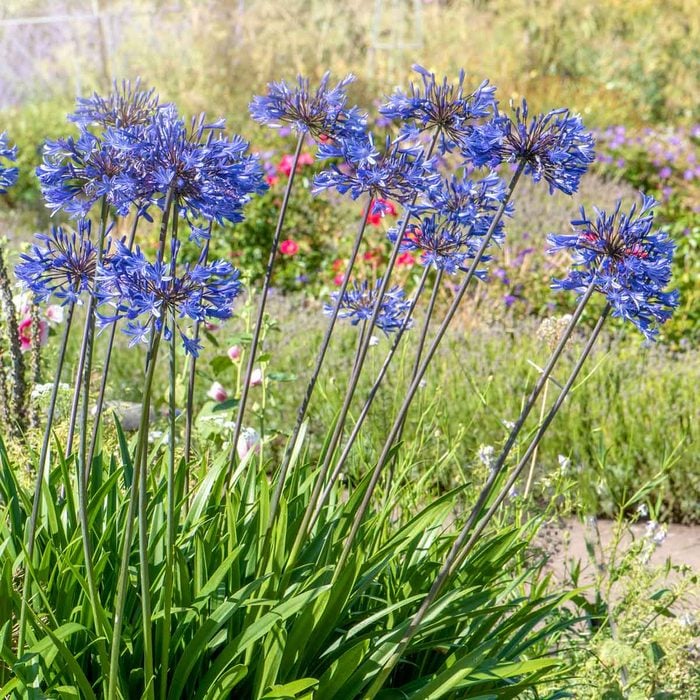
Lily of the Nile
Nicknamed the “daylily of the South,” Agapanthus is widely planted in sunny landscapes and containers because it is so easy to grow and blooms nearly all summer. Although most varieties are hardy in Zones 8 through 10, newer breeding has resulted in some that are more cold-hardy to Zone 6.
Some Agapanthus grow three feet tall with huge flowers, but there are also dwarf ones that won’t even reach your knees in full bloom. Their blossoms range from deep purple to light blue or icy white, perched atop a bare stalk above the sword-shaped leaves. Try clipping a few for fresh bouquets.
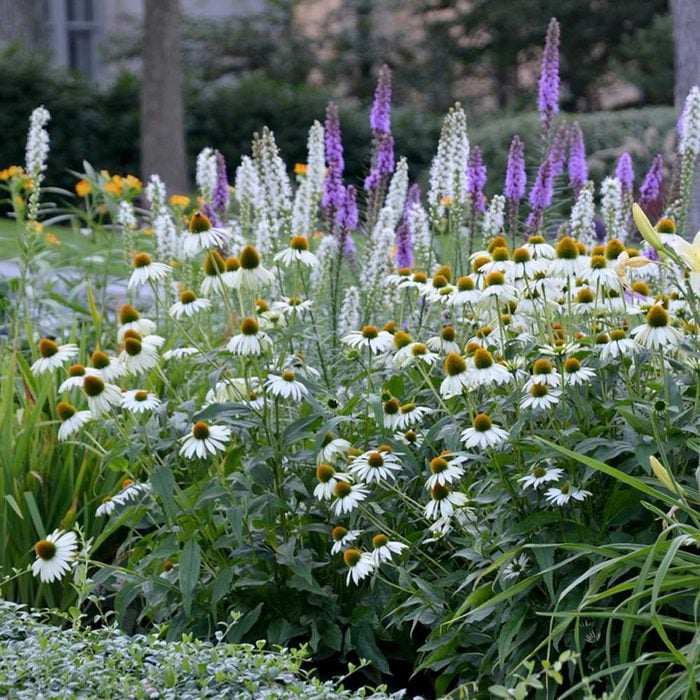
Coneflower
Although it’s possible to grow coneflowers (Echinacea) in light shade, you’ll find these colorful perennials flourish and return more reliably from year to year in Zones 4 to 9 if you plant them in a bright, sunny spot. You won’t need to enrich your soil or use fertilizer when planting. Just make sure you pick a spot where the ground doesn’t stay wet for too long. Coneflowers hate “wet feet,” especially in winter.
Pollinating bees, butterflies and songbirds enjoy all different colors of coneflowers. Look for them in shades of red, orange, yellow, pink, magenta and white at your local garden center.
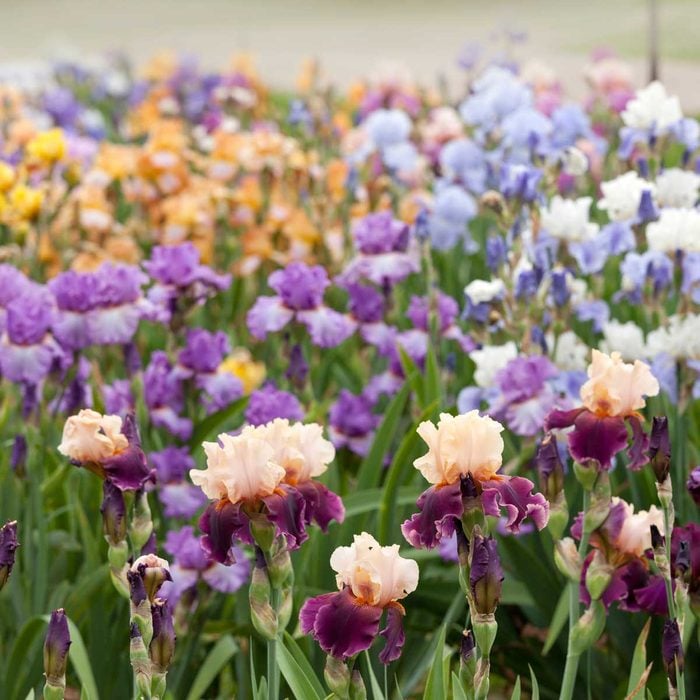
Tall Bearded Iris
Here’s a perennial that’s so much fun to grow, you’ll find yourself anticipating the arrival of their ruffled blooms every year. Thick, sturdy flower stalks that are great for cutting rise up from light green, sword-shaped leaves in late spring and then again in fall for reblooming varieties. You’ll find irises in nearly every shade of the rainbow plus many bicolors.
Tall bearded irises don’t like to be crowded in with other plants, so find a sunny spot where they can shine on their own. Well-drained soil is a must, or their plump tubers will rot. Hardy in Zones 3 to 10.
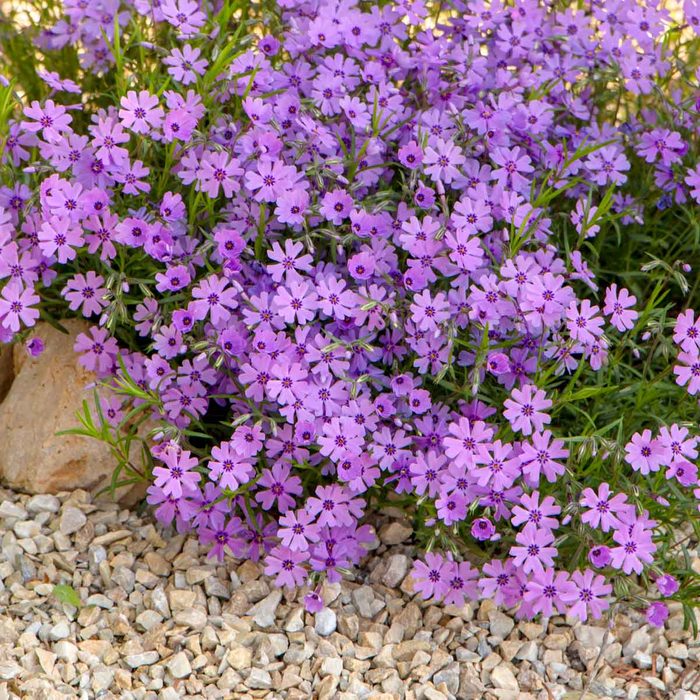
Phlox
You may know tall garden phlox, but the genus Phlox is incredibly diverse with more than 60 native species found across North America. Some grow flat on the ground like a colorful carpet while others present their fragrant blossoms nearly chin-high. Although their hardiness varies, one thing they all have in common is they love the sun.
By choosing several kinds, you can have phlox blooming in your garden from spring into fall for some gorgeous fall flowers. Pollinating bees, butterflies and hummingbirds are all fans, but so are deer and rabbits. Animal repellents can help keep them safe from curious four-legged critters.
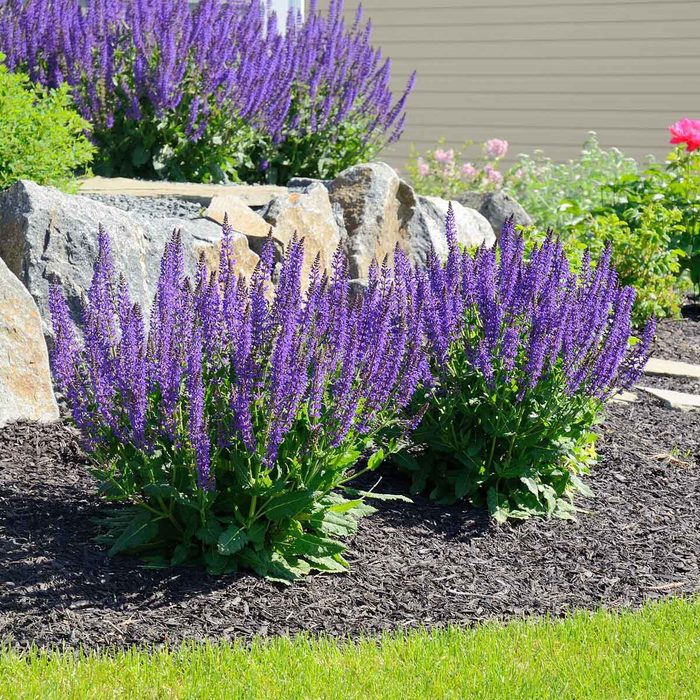
Salvia
A sure way to draw pollinators to your sunny garden is to grow salvia. There are several types including perennial salvia that returns reliably every year in Zones 3 to 8. There are also many colorful annual salvias that bloom in shades of red, pink, blue and purple. Bees, butterflies and hummingbirds love them all!
Perennial salvia traditionally blooms from late spring to early summer, but reblooming cultivars continue to shoot up more flower spikes throughout the summer. Give them a good haircut after they flower to encourage more blooms and neaten their appearance.
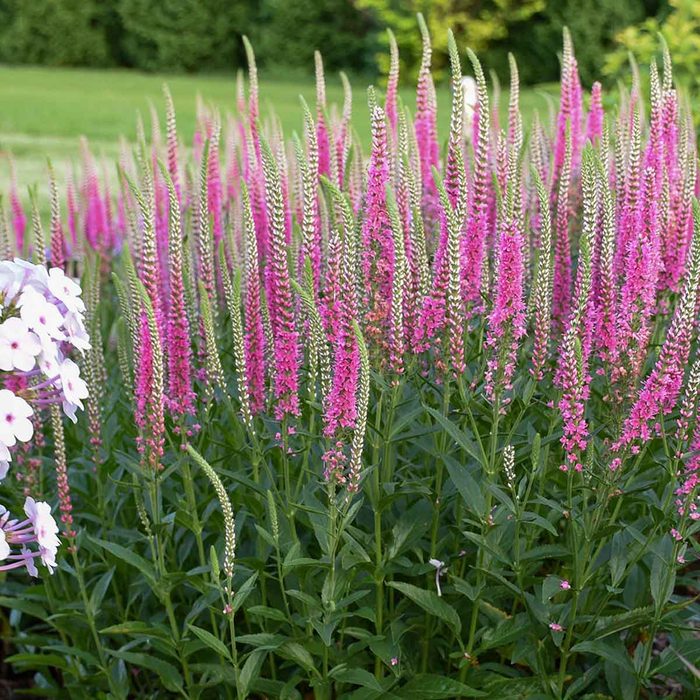
Spike Speedwell
Often confused with perennial salvia, spike speedwell is botanically known as Veronica. Although both do a fantastic job at drawing in pollinators, these two perennials bloom at different times of the year. Salvia’s flowers are spent long before spike speedwell begins its show. By planting both, you can have perennials in bloom from late spring to late summer.
Spike speedwell comes in purple, blue, white and pink, like the cultivar ‘Perfectly Picasso’. Look for varieties that say “disease resistant” on the label to avoid ones that can develop spotting on their lower leaves or powdery mildew in late summer. Hardy in Zones 4 to 8.
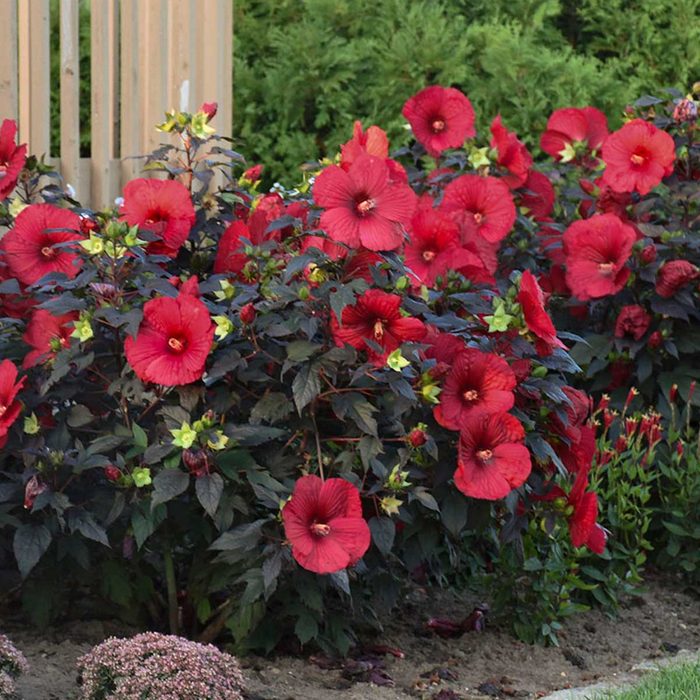
Rose Mallow
The king of sunny gardens is Hibiscus, commonly known as rose mallow. It bears the largest flowers of any hardy perennial and commands attention when in bloom from midsummer to fall. You can’t miss the huge eight- to nine-inch-wide, fire engine red flowers and near-black foliage of Summerific ‘Holy Grail’.
Rose mallow is incredibly heat tolerant through Zone 9, but also survives winters as cold as Zone 4. The most critical factor besides sun is moisture. Be sure to keep this perennial watered consistently throughout the growing season.
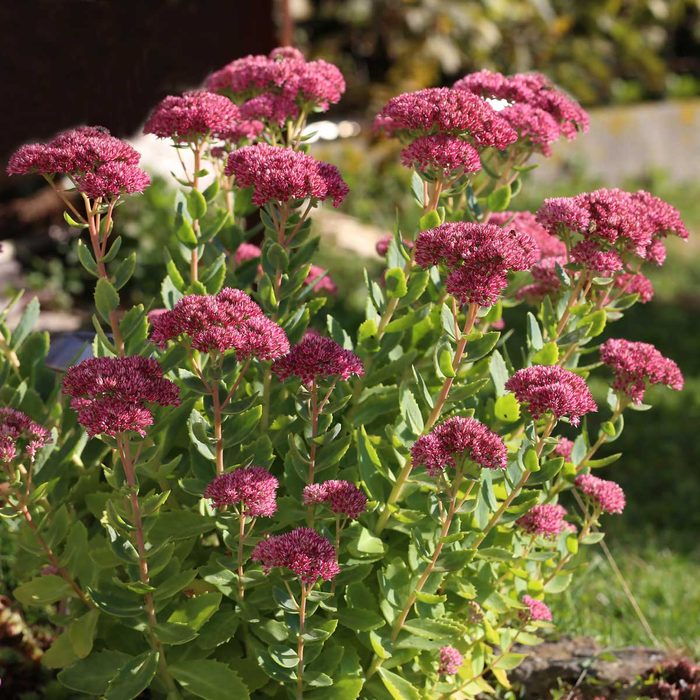
Autumn Stonecrop
There are good reasons why autumn stonecrop is one of the most widely planted hardy perennials. It’s super easy to grow across a broad hardiness range in Zones 3 to 9. As long as you give it plenty of sunshine and don’t let its roots sit in wet soil, this plant will thrive with almost no maintenance. Plus, it’s easy to divide every few years so you can spread it around your garden.
You’ll find pollinating bees and butterflies feeding on the dense clusters of pink, red or light yellow flowers daily when these plants are in bloom. Clip a few stems and pair them with ornamental grass plumes for a grand fall bouquet.
